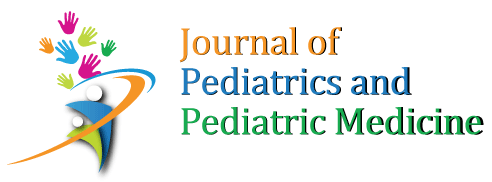Dyshormonogenesis Emerging as a Predominant Cause of Congenital Hypothyroidism in India - A Mini Review
Sudha Rathna Prabhu*
The Tamil Nadu Dr MGR Medical University, Chennai, Tamil Nadu, India
Congenital hypothyroidism (CH) is one of the most common preventable and treatable cause of intellectual impairment in children. Among known etiologies dysgenesis due to abnormal anatomical development and dyshormonogenesis as a result of deranged physiological functioning of fetal thyroid gland. account for at least 90 % of causes of CH. While review of literature report thyroid dysgenesis as the most common etiology of CH currently focus is on iodine status adequacy in women before and during pregnancy and after delivery and lactation. Worldwide reports of previously iodine sufficient countries declared presently as iodine insufficient and recent publications of several Indian states consuming lesser amounts of iodized salt seem to indicate that iodine related pathophysiological factors are emerging as predominant etiologies of CH. The most vulnerable pregnant women and newborns are prone to be affected with iodine imbalances leading to pregnancy and perinatal related complications. Analysis of demographic, biochemical, clinical and statistical data by Indian Council of Medical Research (ICMR) in a multi-centric pilot study on congenital hypothyroidism has clearly shown that dyshormonogenesis is a leading cause of CH in neonates born in India. The need of the hour is to consider mandatory newborn screening for CH in all live newborns and further conduct country wise ethnic and culture oriented research studies with special emphasis on iodine status, genetic predispositions and lifestyle changes impact on all vulnerable populations and design effective early therapeutic strategies for management of CH to prevent intellectual impairment.
DOI: 10.29245/2578-2940/2018/4.1130 View / Download Pdf Potentially Inappropriate Prescribing in Children
DOI: 10.29245/2578-2940/2018/5.1135 View / Download PdfEmma Barry*, Susan M Smith
HRB Centre for Primary Care Research, Department of General Practice, Royal College of Surgeons in Ireland, Dublin, Ireland
Identifying and Preventing Cardiac Risk Factors from Fetal Life
Lawrence M. Benedict1, Deeksha Sarma1, Achintya Moulick1,2, Randy Stevens1,2, Vicki Mahan*
1Drexel University College of Medicine, PA, USA
2Department of Pediatric Cardiothoracic Surgery, St. Christopher’s Hospital for Children, Philadelphia, PA, USA
Cardiac risk factors in childhood are often overlooked in clinical practice, however cardiac risk factors can start before the child is even born. Maternal factors including diet, genetics, and smoking during gestation can all impact the long-term cardiac health of the offspring. Atherosclerosis starts as early as fetal life and can continue to develop in children with risks including high cholesterol. Current guidelines for screening of cholesterol in children, while improving in recent years, still allows years of damage to accumulate before identifying those at risk. Additionally, intervention for cholesterol and other known risks in children and adolescents are often avoided or started later than necessary for optimal cardiac health. Non-pharmacological approaches like diet and exercise for cholesterol and health management can be implemented very early in life, while many pharmacological options are approved for use in certain conditions as early as ages 8 to 10. Combating cardiac disease reaching endemic levels in the developed world will take an aggressive approach in management starting with identification early in life and utilizing the appropriate tools available, both medical and lifestyle.
DOI: 10.29245/2578-2940/2018/4.1131 View / Download Pdf Simulation-Based Education for the Rural Pediatric Trauma Team
DOI: 10.29245/2578-2940/2018/5.1133 View / Download PdfLilly Bayouth1*, Shannon W. Longshore2
1Department of Surgery, Brody School of Medicine at East Carolina University, 600 Moye Blvd, Greenville, NC, USA
2Division of Pediatric Surgery, Brody School of Medicine at East Carolina University, 600 Moye Blvd MA, 207, Greenville, NC, USA
Congenital Insensitivity to Pain Syndrome with Anhidrosis. Review of Literature
Vugar Nabi Nabyev1, Hakan Seneran2, Mehmet Cemalettin Aksoy3*
1Acibadem Ankara Hospital, Department of Orthopedics, Ankara, Turkey
2Selcuk University Faculty of Medicine, Department of Orthopedics, Selcuklu/Konya, Turkey
3Hacettepe University, Faculty of Medicine, Department of Orthopedics, Ankara, Turkey
The congenital insensitivity to pain with anhidrosis (CIPA) is a rare autosomal recessive disease caused by mutations in NTRK1 gene (neurotrophic tyrosine kinase receptor 1) located in chromosome 1q21-22, encoding the tyrosinase domain receptor high affinity nerve growth factor. It is characterized by anhidrosis, insensitivity to painful stimuli and mental retardation. Given their low prevalence and the few reported cases, it is important to know its main features to be considered in the differential diagnosis in pediatric practice. The therapeutic approach of CIPA remains unclear. The preventive approach remains the only possible treatment of CIPA. Early surgical treatment for long bone fractures to prevent pseudo arthrosis and to allow early weightbearing decreasing the risk of further osteopenia. The choice of appropriate antibiotics and surgical debridement in cases of infection might prevent further destruction of joints.
DOI: 10.29245/2578-2940/2018/4.1126 View / Download Pdf Commentary: Violent Aggression Predicted by Multiple Pre-Adult Adverse Experiences
DOI: 10.29245/2578-2940/2018/4.1134 View / Download PdfHannelore Ehrenreich1,2*, Luise Poustka3#
1Clinical Neuroscience, Max Planck Institute of Experimental Medicine, Göttingen, Germany
2Cluster of Excellence and DFG Research Center for Nanoscale Microscopy and Molecular Physiology of the Brain (CNMPB), Göttingen, Germany
3Department of Child and Adolescent Psychiatry and Psychotherapy, University Medical Center, Göttingen, Germany
